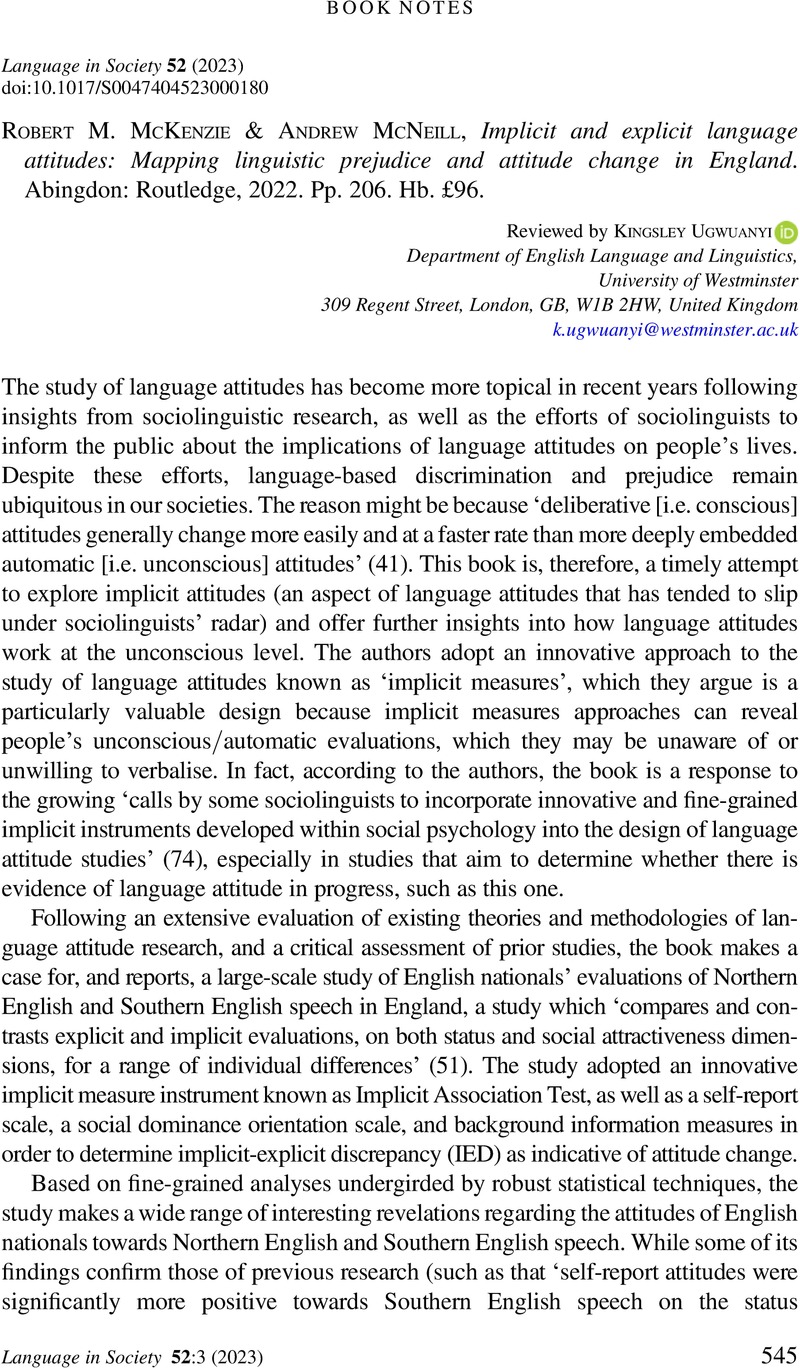No CrossRef data available.
Article contents
Robert M. McKenzie & Andrew McNeill, Implicit and explicit language attitudes: Mapping linguistic prejudice and attitude change in England. Abingdon: Routledge, 2022. Pp. 206. Hb. £96.
Review products
Robert M. McKenzie & Andrew McNeill, Implicit and explicit language attitudes: Mapping linguistic prejudice and attitude change in England. Abingdon: Routledge, 2022. Pp. 206. Hb. £96.
Published online by Cambridge University Press: 12 June 2023
Abstract
An abstract is not available for this content so a preview has been provided. Please use the Get access link above for information on how to access this content.

Information
- Type
- Book Notes
- Information
- Copyright
- Copyright © The Author(s), 2023. Published by Cambridge University Press


